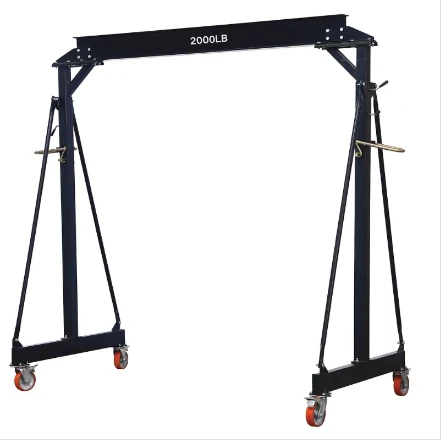overhead gantry
The Importance of Overhead Gantries in Modern Infrastructure
In the dynamic landscape of modern infrastructure, the role of overhead gantries has become increasingly crucial. These structures, often seen along highways, railroads, and in various industrial settings, serve multiple functions that enhance safety, efficiency, and logistics. In this article, we delve into the significance of overhead gantries, their various applications, and the advancements that are shaping their future.
What is an Overhead Gantry?
An overhead gantry is a robust framework designed to support various loads and equipment above ground level
. Typically constructed from steel or aluminum, these structures consist of a horizontal beam or bridge supported by vertical posts. They can be found in many environments, including construction sites, warehouses, and along transportation routes. Overhead gantries are primarily used for transporting goods, monitoring traffic, supporting signage, and housing communication equipment.Enhancing Traffic Management
One of the most notable applications of overhead gantries is in the realm of traffic management. These structures are integral to the installation of traffic signs, signals, and electronic message boards. By elevating these components, overhead gantries ensure that they are visible to drivers from a distance, minimizing distractions near the roadside.
In addition to signage, overhead gantries are often equipped with advanced traffic monitoring systems. These may include cameras and sensors that collect real-time data on vehicle flow, speed, and congestion levels. Such information is invaluable for traffic management centers, allowing for timely interventions to keep roads safe and efficient. In cities with heavy congestion, overhead gantries can directly impact travel times and accident rates, making them essential in urban planning.
Applications in Rail Transport
Overhead gantries also play an influential role in the railway sector. They are utilized for the installation of track signaling systems, communication networks, and even for loading and unloading freight. Such gantries significantly streamline operations, ensuring that trains can operate safely and efficiently. By supporting necessary infrastructure above ground, they help maintain clear lines for rail traffic, reducing the risk of collisions and improving service reliability.
overhead gantry

Moreover, in freight terminals, overhead gantries facilitate the operation of cranes and other material handling equipment. This not only speeds up the loading and unloading processes but also maximizes space efficiency in busy transport hubs. Their design allows for the easy movement of goods without interfering with ground-level operations, which is vital in high-volume environments.
Industrial Applications
In industrial settings, overhead gantries are indispensable for material handling and logistics. Factories and warehouses often use these structures to support cranes that move heavy loads across the facility. This application enhances productivity, as workers can focus on their tasks without the physical strain of lifting and transporting materials manually. It also increases safety by minimizing the risk of accidents associated with manual handling.
Additionally, overhead gantries can accommodate various equipment, including lighting, ventilation systems, and even safety barriers. Their versatility makes them a preferred choice in environments where space is limited, and efficiency is paramount.
Advancements in Overhead Gantry Technology
As technology continues to evolve, so too does the design and functionality of overhead gantries. The integration of smart technologies, such as IoT sensors and automated systems, is transforming how these structures operate. For instance, smart gantries equipped with sensors can monitor structural integrity and environmental conditions, alerting operators to potential maintenance needs before they become significant issues.
Furthermore, the use of lightweight construction materials and advanced engineering techniques is enhancing the sustainability of overhead gantries. By reducing material usage and increasing load capacity, these innovations are contributing to more environmentally friendly construction practices.
Conclusion
In conclusion, overhead gantries are vital components of modern infrastructure that enhance safety, support efficient logistics, and streamline operations across various sectors. Their applications in traffic management, rail transport, and industrial settings highlight their versatility and importance. As technology advances, the future of overhead gantries promises even greater efficiency and safety, making them an indispensable asset in our rapidly evolving world. The ongoing development and integration of smart technologies will ensure that these structures not only remain relevant but also continue to improve the way we manage roads, railways, and industrial environments.
-
Unlock Seamless Relocation with Our Heavy Equipment Moving ExpertiseNewsJun.06,2025
-
Unleash Unrivaled Flexibility with Our Adjustable Gantry CraneNewsJun.06,2025
-
Unleash Heavy-Duty Efficiency with Our Industrial Gantry Crane SolutionsNewsJun.06,2025
-
Revolutionize Steel Handling with Our Magnetic Lifter RangeNewsJun.06,2025
-
Master Equipment Mobility with Premium Machinery Mover SolutionsNewsJun.06,2025
-
Elevate Your Material Handling with Magnetic Lifter TechnologyNewsJun.06,2025
-
YS Permanent Lifting Magnets: The Smarter Way to Handle SteelNewsMay.22,2025
